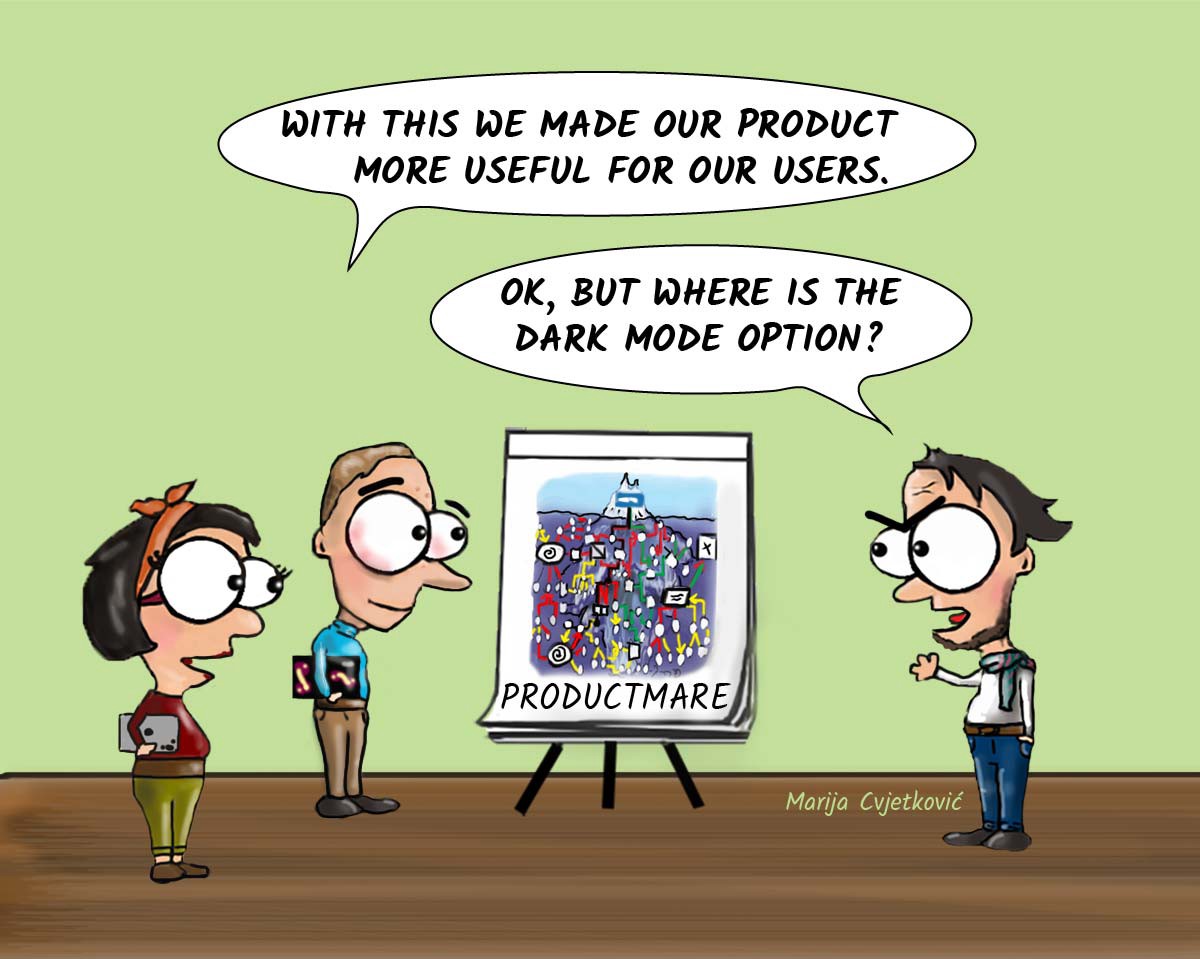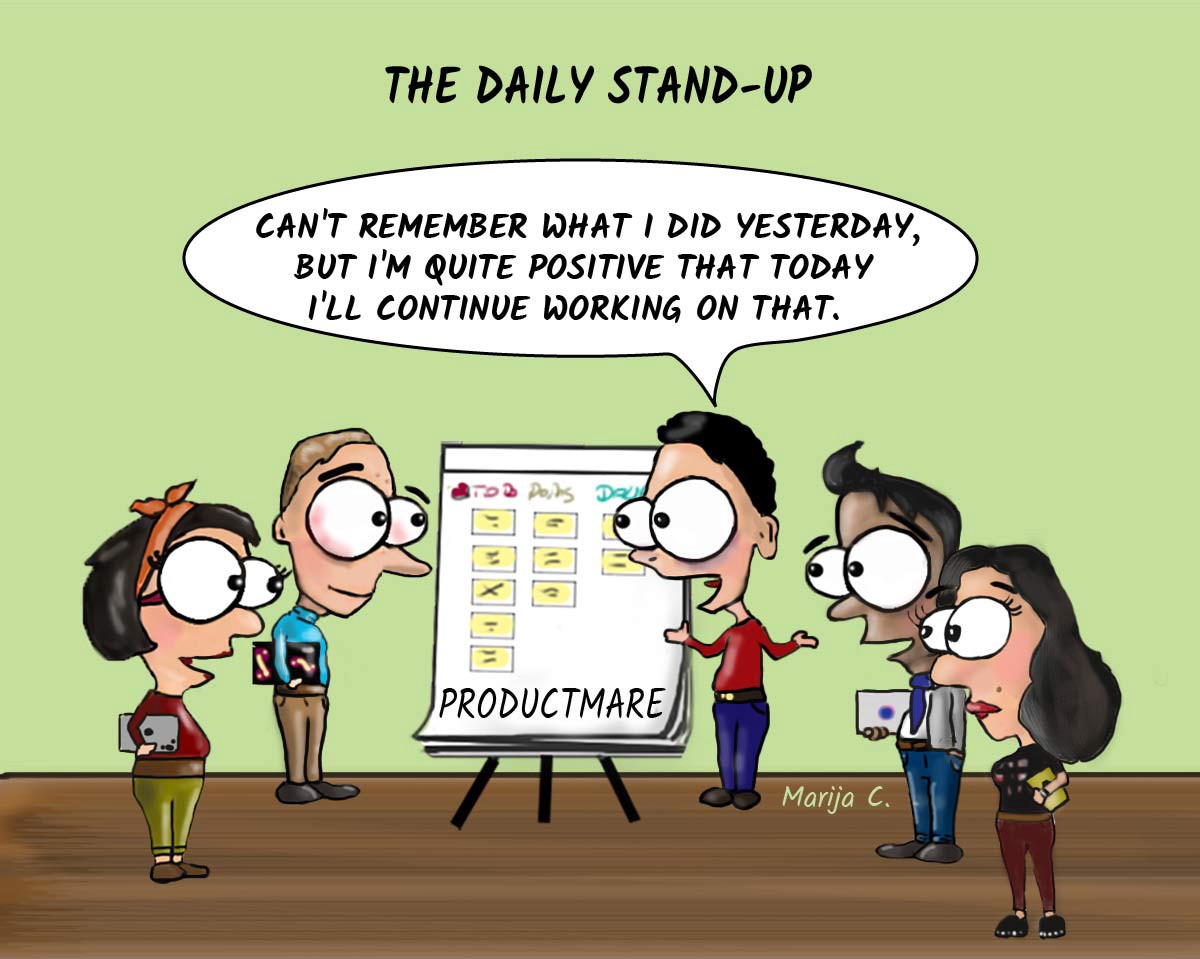Scrum Ceremonies
Important Definitions
Sprint: the building blocks of development under Scrum. They are short, time specific periods where a team works to accomplish specific work and goals. In general, there are four key ceremonies that make up sprints: sprint planning, daily standups, sprint reviews, and retrospectives.
Sprint Planning: meeting time spent planning for the upcoming sprint including task ownership and increment decisions
Daily Scrums: short (5-15 minute), daily check ins where each team member speaks very briefly on what they are working on and notify the team of any blockers they are facing
Sprint Review: a meeting held towards the end of a sprint to demo the increment and reorganize the product backlog
The second to last ceremony of a sprint is called a sprint review. These meetings are meant to dis‐ cuss, demonstrate, and celebrate the team’s work from the sprint. Development team members will discuss, present, and showcase their work and seek approval for completion of their tasks from the product owner.
It is during the sprint review that product owners or other development team members can give demonstrations and receive feedback on their work with the main goal being to decide if tasks are completed or should be rolled over into the next sprint.
Sprint Retrospective: a meeting with the scrum team spent reflecting on what what went well during the previous sprint and what can be improved upon for next sprint
A sprint retrospective is the final sprint ceremony within a sprint. This event is simply a time to reflect on the sprint and discuss positive and negative parts of the sprint. This ceremony is an open discussion, and the time can be used however the team feels is most helpful. In general, encouraging honesty and talking about areas of improvement will improve the team for the next sprint.
Ceremonies in The Data Mine
Using scrum ceremonies may be the single most important part of using scrum in The Data Mine. It is normal to seek structure in project development, but it is often very hard to find with research and development projects. Scrum ceremonies offer that structure.
By committing to a regular and consistent schedule, scrum teams will find themselves in a steady groove as the project unfolds.
Sprint Planning
Deciding what tasks need to be done is a crucial first step towards a successful sprint. To start, product owners and scrum masters take the responsibility for the delivery and upkeep of the product backlog. The product backlog is a prioritized list of tasks for the development team to accomplish. The product backlog clearly lays out stakeholder and customer expectations such that the development team can satisfy these needs. Because this system creates a transparent set of tasks to be completed, the development team can take ownership of specific tasks for each sprint. During the sprint planning ceremony, development team members create a plan of action based on the product backlog and move tasks from the product backlog to the sprint backlog. The sprint backlog is the same as the product backlog, but rather than it being a list of tasks for the entire project, it is a prioritized list for only the upcoming sprint.
Once tasks are decided on for the upcoming sprint, the next step of sprint planning will be to plan how these tasks will get done. The scrum team will examine how each of the selected tasks fit together and create a plan of completion. When using a management software, notes and specific sub-tasks can be noted directly on the task, allowing everyone on the team to see written thoughts.
Lastly, the team needs to decide who will take ownership of each of the tasks. Choosing tasks based on each other’s strengths is important. The development team will discuss who is best fit to take on certain tasks and will label who takes ownership of each task in the sprint backlog.
Sprint Planning in The Data Mine
Sprint planning should take place at the start of every sprint. Realistically, planning meetings will occur at the first team meeting following the end of sprint. TAs are responsible for creating and maintaining the product backlog by working with their team’s corporate partner mentor to ensure they project is moving with correct pace and direction.
During the sprint planning meeting, an open discussion is held between the corporate partner mentors, TAs, and development team. Each development team member will take ownership of tasks from the product backlog to complete the coming sprint. Each event that is chosen will then be moved to sprint backlog.
Sprint Review
Sprint reviews should occur once every sprint during a meeting time with the team’s corporate partner mentor in attendance. Team members will go around and informally demonstrate their work through live demos, documentation, or presentations. This meeting is where the corporate partner mentor can clearly see the work being done by the team and can give feedback to the team. It is crucial for the team to be prepared for these meetings on a sprint-by-sprint basis because it is direct representation of the work being accomplished. Feedback from the corporate partner mentor should be annotated and applied towards the next sprint.
Sprint Retrospective
Retrospectives in The Data Mine function as a standard retrospective. This ceremony will happen at the end of every sprint and is a time for reflection and evaluation of the sprint. This event can be held with or without a corporate partner mentor, and it is the TA’s responsibility to lead this ceremony.
|
Encourage honesty in the hope of continued improvement. |
Daily Standups
During the duration of the sprint, teams will hold a daily ceremonie called daily standups. These short meetings should last no longer than 15 minutes and are simply a check in point each day for the team. Each person on the team will speak for a couple minutes, answering these questions:
-
What did I do yesterday?
-
What will I do today?
-
Do I have any blockers?
Daily standups keep each team member accountable for their progress and allows for discussion of any blockers as well.
Daily Standups in The Data Mine
It is not feasible to have daily standups in The Data Mine model because teams are constrained by an academic schedule. However, it is possible to hold similar events on a weekly basis. Once a week, teams should start their meetings with a “weekly” standup following the same format of a daily standup.
Sprint Schedule
The sprint start and end dates are slightly shifted depending on when a team has their lab (2 hours) and lecture (50 minutes).
This is so that sprints always start with a lec and follow the format lec-lab-lec-lab.
Because The Data Mine Corporate Partners experience is on an academic schedule, the typical sprint schedule used in industry must be modified. Here is an example of a sprint schedule in The Data Mine:
Monday/Tuesday Meeting: sprint planning meeting with corporate partner mentor
Thursday/Friday Lab: standup and working meeting
Following Monday/Tuesday Meeting: sprint review meeting with corporate partner mentor
Following Thursday/Friday Lab: standup, sprint retrospective, and working meeting
|
This schedule can be modified slightly, but it is most important for sprint planning meetings and sprint review meetings to be held with corporate partner mentors. |
Scroll down in the table below to compare the two schedules. You can also view the tables directly via this link.
Scrum Ceremonies Cartoon


Cartoon illustrated by Marija Hajnal